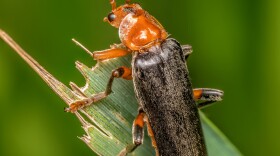To an arachnophobe, nothing is more terrifying than the thought of a spider. Despite efforts to convince them how amazing spiders are, more than a few times our conversation ended with something like, “Well, thank goodness they can’t fly.”
I’m sorry to say, that’s not exactly true.
While spiders don’t have wings, they have been found two and a half miles in the air and as far as 1,000 miles out to sea. How did they do it?
It’s called ballooning. And it’s mainly spiderlings (or baby spiders) that take to the air, but some larger spiders have been observed doing it too.
A spider will climb to a high point, like the tip of a branch or blade of grass. Here it will spin a long strand of silk and become airborne.
It was commonly thought that the silk simply caught the wind and took the spider along with it. But observers as far back as Charles Darwin noticed that spiders only ballooned on days with light winds, not accounting for their impressive travel.
It was not until more modern research uncovered the answer, which you might find shocking. Electricity. Thanks to thunderstorms, the Earth’s atmosphere is electrically charged …the upper reaches of the atmosphere having a positive charge, while the ground has a negative charge.
Ballooning spiders use this to their advantage. If you remember from your physics class, like charges repel, while opposite charges attract.
When leaving a spider’s spinnerets, the silk picks up a negative charge. So, the negatively charged ground and the negatively charged spider silk repel each other, sending our little friend up into the positively charged atmosphere.
And that, is positively amazing!





